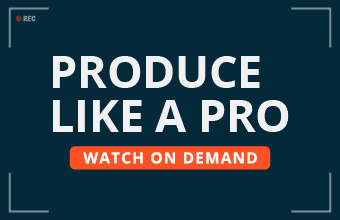In an era where likes and shares dominate the social media landscape, it’s easy for businesses to become fixated on these surface-level metrics. However, beneath the facade of popularity lies a more complex reality: The true impact of social media on brand success is multifaceted and often goes beyond mere engagement numbers.
Understanding the genuine impact of social media on brand perception and profitability is paramount for businesses striving for sustainable growth in today’s digital age.
This article will delve into the limitations of focusing solely on likes and shares, explore critical metrics for measuring brand impact, discuss strategies for building brand reputation and fostering customer loyalty, and provide insights into effectively measuring ROI through real-world case studies.

The pitfalls of focusing on likes & shares
Likes and shares are often seen as the holy grail of social media success. However, relying solely on these metrics can be misleading. Sure, many likes might feel good, but it doesn’t tell the whole story. Here’s why:
- Limited view of engagement: Likes and shares are one-click actions. They don’t reveal if someone genuinely connected with your content or found it valuable. Did they read the entire post? Did they leave a comment expressing their thoughts? These actions provide a much clearer picture of social media engagement.
- Misleading popularity: It’s easy to inflate likes and shares through paid promotions or fake accounts. This creates a false sense of popularity that doesn’t translate to a real brand connection.
Focusing on these vanity metrics can lead you to the wrong social media strategy path. In the next section, we’ll explore more meaningful metrics that provide a deeper understanding of your brand’s impact on social media.
Critical metrics for brand impact
While likes and shares might seem like a sign of success on social media, according to the 2023 Sprout Social Index, only 38 percent of marketers believe likes and shares accurately reflect brand performance. To gain a more nuanced understanding of how social media impacts your brand, let’s explore two key metrics categories: engagement and conversion metrics.
Engagement metrics
Engagement metrics delve beyond simple reactions to reveal how deeply your audience interacts with your brand.
- Comments, where followers share their thoughts and opinions, provide valuable insights into brand sentiment.
- Shares with context, where users add their commentary when sharing your content, indicate genuine interest and a desire to spread your message further.
- Whether positive or negative, mentions show that your brand sparks conversation and builds brand awareness.
By focusing on these metrics, you can gauge how effectively your social media strategy resonates with your target audience.
Conversion metrics
Social media isn’t just about likes and comments; it’s also a powerful tool for driving conversions and sales. Conversion metrics track how social media influences the customer journey, from initial brand awareness to consideration and conversion.
By monitoring website traffic generated from social media posts, leads acquired through social media campaigns, and brand advocacy displayed through social mentions, you can assess the effectiveness of your social media efforts in driving business results and achieving a positive return on investment (ROI).
Listening & responding: Building brand reputation
In today’s digital landscape, social media has become a powerful platform for customer communication. But simply broadcasting messages isn’t enough. You need to listen and respond actively to connect with your audience and build a strong brand reputation. Here’s how social listening can be a game-changer.
Social listening refers to monitoring online conversations about your brand across various social media platforms. According to the 2023 Social Media Industry Report, 80% of customers expect brands to respond to social media messages. By utilizing social listening tools, you can gain valuable insights into what people say about your brand, both positive and negative.
This enables you to identify brand mentions, track sentiment analysis, and promptly address customer concerns. You can build trust and cultivate a positive brand image by actively engaging with your audience, responding to comments and messages, and demonstrating that you value their feedback.
Social listening lets you participate in conversations, address issues before they escalate, and turn satisfied customers into brand advocates.
For instance, if you’re a hair salon utilizing Fresha’s hair salon booking automation software, which includes customer reviews for listed brands, it’s extremely helpful from a business perspective to track your brand’s reviews. Additionally, one cool thing you can do here is monitor all of your competitors in your target location or city for insights and pay attention to not only what they like but also wanted they don’t like as this will provide your business with ways to improve your business but also it may even give you some idea to create new service offerings.
The power of customer engagement
Customers’ engagement with social media goes beyond simple exchanges; it fosters confidence and lifelong commitment. Consider yourself a startup small business bookkeeping software developer. Engaging your audience on social media will help you to create a community around your business and get insightful comments to help you develop your offering.
This client involvement can help a small business bookkeeping software provider improve products depending on user demands and preferences. It also produces champions who share their good experiences, enhancing the brand’s legitimacy and reach.
Or did they share a screenshot of your software interface showcasing a specific feature they love and how it saved them time managing their finances? This deeper level of engagement shows they’re not just passively consuming your content but actively using and benefiting from your product.
This deeper level of engagement shows a genuine interest in your brand and creates a stronger connection.
There are many ways to encourage this kind of active participation, such as:
- Running contests or polls can spark conversations and excite people about your brand.
- Hosting Q&A sessions allows you to address customer questions and build trust directly.
- User-generated content (UGC) campaigns, where you encourage followers to share their photos or experiences with your products, can be a powerful way to boost brand loyalty and authenticity.
By implementing these strategies, you’re not just collecting likes and shares but fostering a community around your brand. This two-way communication strengthens customer relationships, leading to increased brand loyalty and a more successful social media presence.
Measuring ROI
So, you’ve implemented strategies to boost engagement and build brand loyalty, but how do you know if your social media efforts are truly paying off? This is where measuring ROI becomes crucial.
ROI essentially tells you how much profit you make for every dollar invested. In the context of social media, it helps you understand the return you’re getting on your time, money, and resources spent on these marketing initiatives.
According to a 2023 HubSpot-Brandwatch study, a staggering 89% of businesses indicate that social media marketing positively impacts their ROI. However, simply tracking likes and shares doesn’t provide a clear picture.
To measure ROI effectively, we need to delve deeper into the above-mentioned metrics that are aligned with your business goals.

(Source)
Case studies
Seeing is believing, and case studies offer powerful proof when it comes to social media impact. Let’s explore how three global brands successfully measured their social media impact beyond likes and shares.
Dove: Championing Body Positivity
Dove’s “Real Beauty” campaign is a prime example of social listening driving brand impact. By acknowledging negative body image perceptions through social media campaigns, Dove sparked conversations and built a strong connection with its audience. This significantly increased brand loyalty and sales, proving that social media can be a powerful tool for social good and a positive brand reputation.
Starbucks: Building Community Through Engagement
Starbucks understands the importance of fostering a loyal online community. Through interactive campaigns like their #RedCupContest, Starbucks leveraged social media to encourage user-generated content and brand interactions. This strategy boosted brand awareness and provided valuable customer insights, allowing Starbucks to tailor its offerings and promotions to meet audience preferences better.
Lego: User-Generated Content Fuels Creativity
Lego thrives on user creativity. Their social media strategy encourages fans to share their Lego creations using specific hashtags. This approach entertains its audience, generates valuable free advertising, and strengthens the brand’s connection with its core demographic. By focusing on user engagement and fostering a community of brand advocates, Lego leverages social media to achieve impressive brand impact.
Unlocking social media’s power: Engagement, insights & growth
As social media evolves, businesses must recognize the limitations of focusing solely on likes and shares. By prioritizing meaningful engagement, actively listening to their audience, and measuring ROI, businesses can unlock the full potential of social media as a powerful tool for building brand impact and driving business success. Embracing a data-driven approach will enhance social media strategy and foster long-term brand growth in an increasingly competitive digital landscape.








